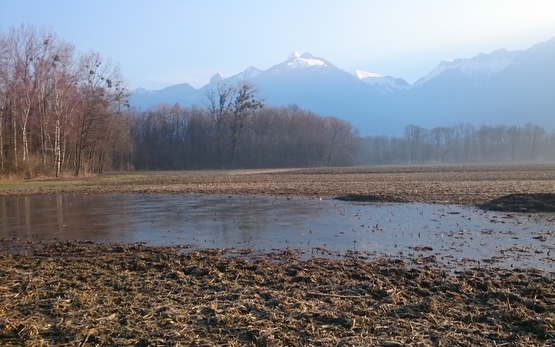Wet arable land (WAL) offers special habitats for a range of animal and plant species that are reliant upon wet-dry habitats. Over the last 200 years, extensive drainage and water correction carried out to enable the cultivation of crops that are dependent upon sites of average wetness have led to a drastic decrease in WAL in Switzerland. For this reason, a large percentage of the wetland-specialised species which the Agricultural Environmental Objectives (AEOs) aim to encourage are currently endangered, or even threatened with extinction. In addition, agricultural drainage systems exert a complex influence on water, nutrient and pollutant flows, erosion, and greenhouse-gas emissions, as well as on agricultural production.
The Wet Arable Land (WAL) project aims to highlight solutions to a number of issues that pose competing demands: the promotion of biodiversity in arable-farming areas; agriculture-related nutrient and pollutant load in surface waters; greenhouse-gas emissions; and agricultural production. Decision-making criteria and potential strategies for the future handling of WAL are provided. The principles are elaborated in six Work Packages:






